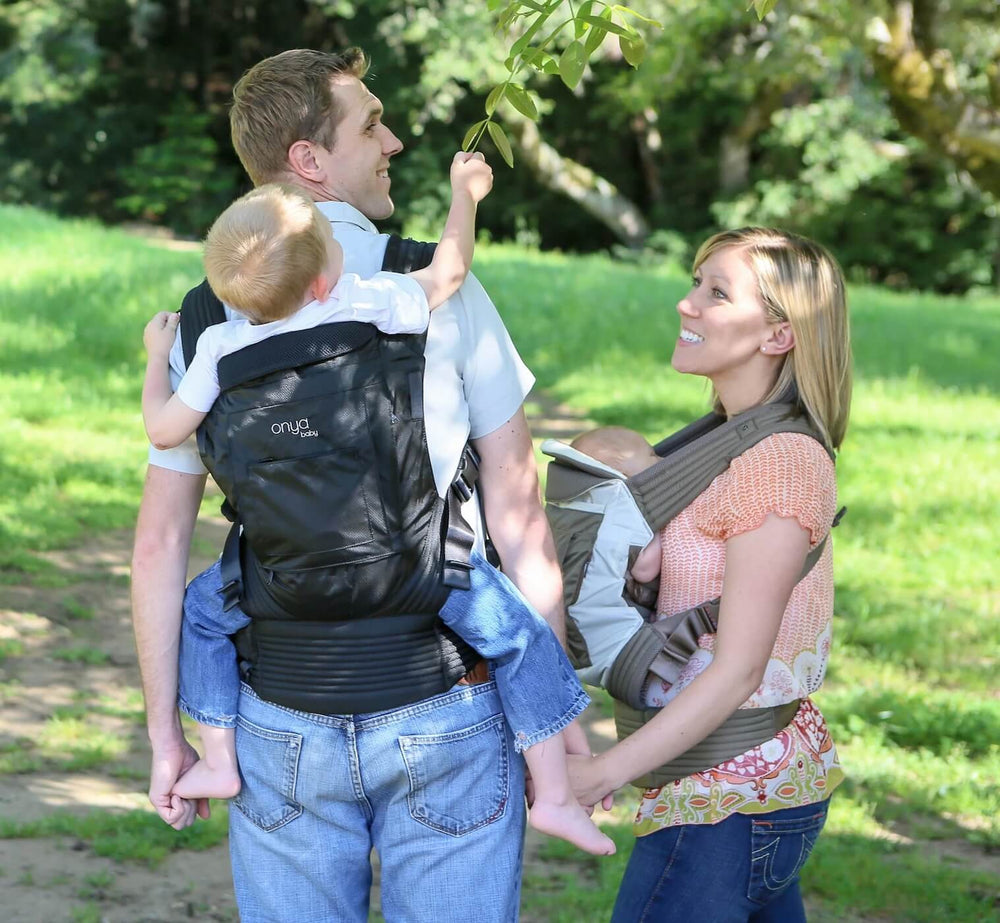Babywearing 101: Healthy hip positioning. It matters.
When you’re thinking about which baby carrier to purchase, there are several things you need to keep in mind. Safety, comfort (for both you and your baby), and even great features are, of course, all very important, but not everyone thinks about healthy hip positioning. The word is getting out that it’s something to keep at the top of your list when choosing your baby carrier, which is a good thing. And we want to keep spreading the message: Proper and healthy hip positioning matters.

According to the International Hip Dysplasia Institute: “Healthy hip positioning avoids positions that may cause or contribute to development of hip dysplasia or dislocation. The healthiest position for the hips is for the hips to fall or spread (naturally) apart to the side, with the thighs supported and the hips and knees bent. This position has been called the jockey position, straddle position, frog position, spread-squat position or human position. Free movement of the hips without forcing them together promotes natural hip development.”
Healthy hip positioning in your baby carrier is particularly important during the first six months of your baby’s life. While inside the womb, your baby’s hips and knees are fully flexed and its spine is in a complete C-shaped curve. After your baby is born, it takes several months for your baby’s joints to loosen and their extensor postural muscles to gain strength. As baby grows and gains strength to hold their head up, they progressively develop the proper spinal neck curve. Also, as they begin to crawl, baby develops the proper spinal curves in the low back. These curves give the optimal structure for movement, weight-bearing activities, and proper neurological development. These curves are best left to develop in their natural progression.

Also, at birth, a baby’s hip joints are not fully developed. They’re shallow ball and socket joints with very little stability. As the baby grows and develops, the socket becomes deeper and more stable. These are reasons why, particularly at the beginning of your baby’s development, healthy hip positioning is essential. You can read more about healthy hip and joint development in this excellent, well-researched and -cited post from chiropractor and guest blogger Dr. Andrew Dodge about the biomechanics of babywearing. We highly recommend it. It goes into much more depth about the developmental and physiological benefits of properly positioned babywearing, especially in the earliest stages of your baby’s development.
There are a number of safe, high-quality, ergonomic baby carriers on the market. We recommend finding a local babywearing group. Not only can your try different baby carriers before committing to one kind by checking out the group’s lending library, but it’s also a great place to meet fellow babywearing parents and make new friends. What’s not to love about that?
Be in the know about your baby’s hips
by following these important safety tips.
Happy babywearing!








